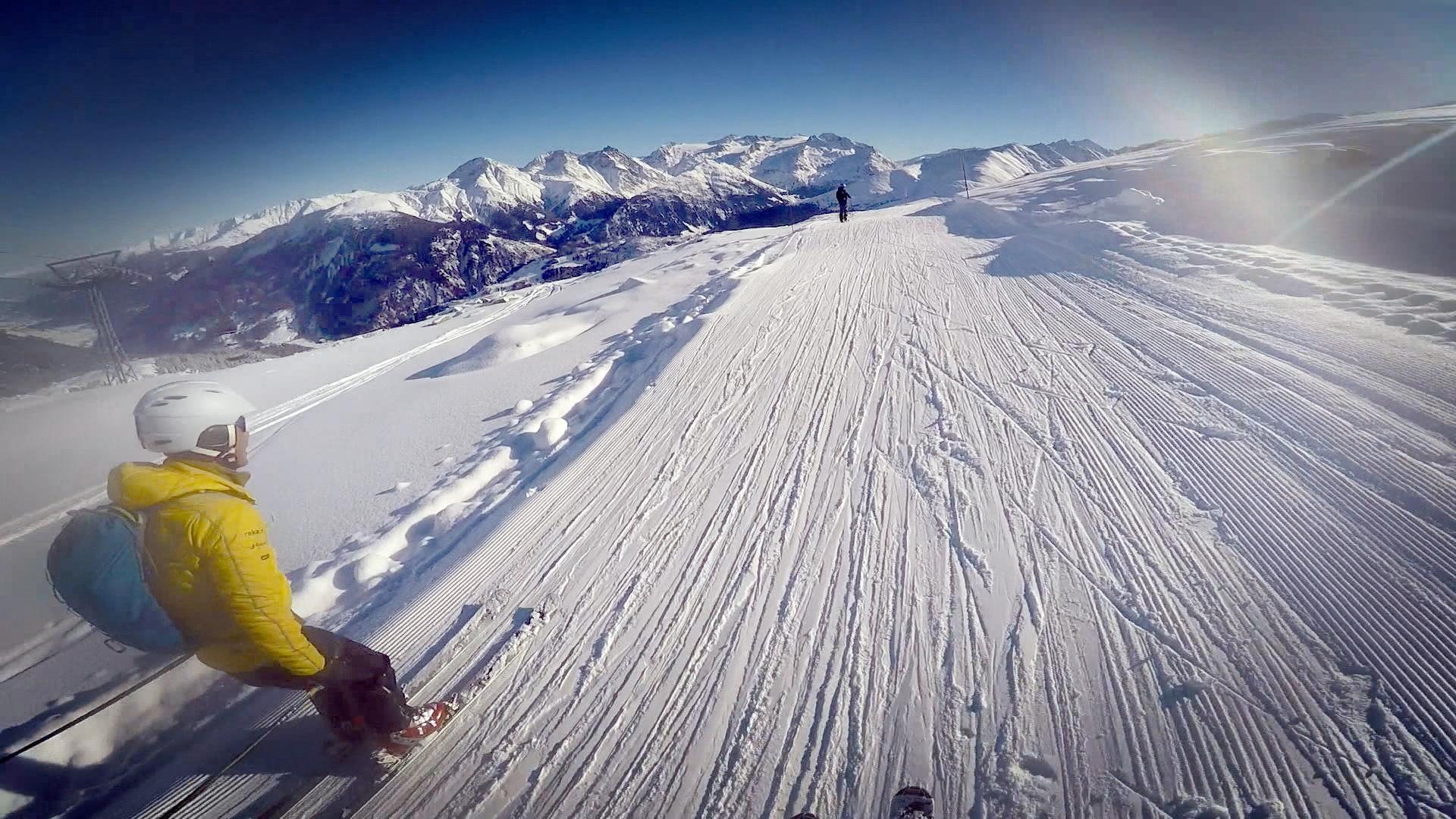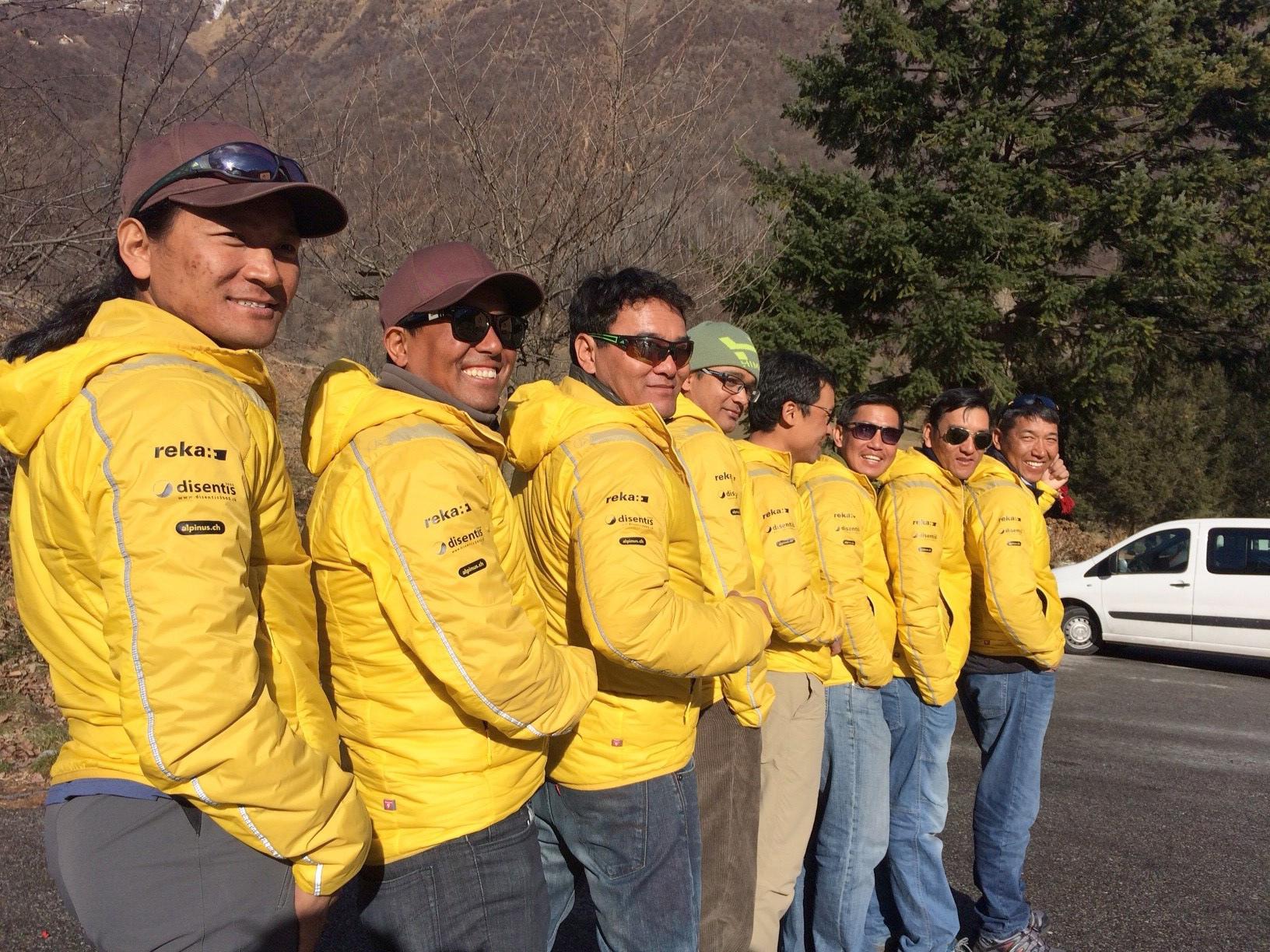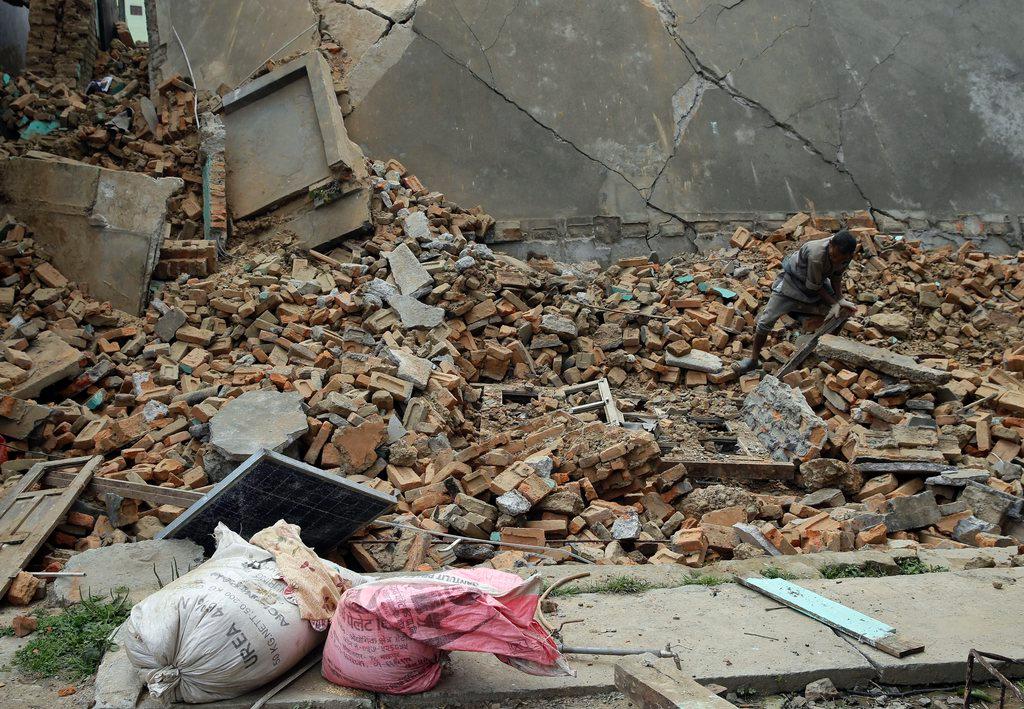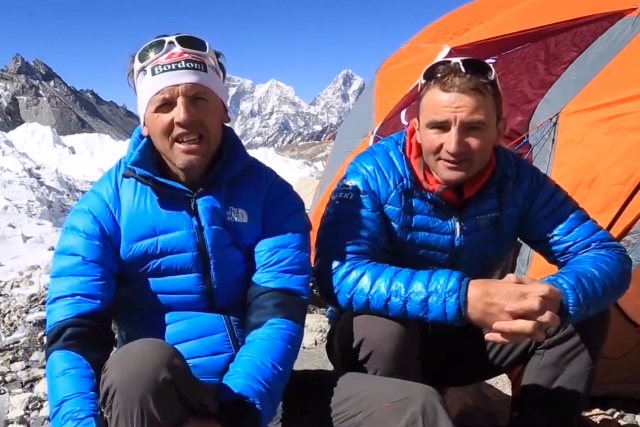Nepalese guides train on Swiss ski slopes
They are eager learners, carving turns with their Swiss and French ski guide instructors, but these are no ordinary students in the Alps.
Several Nepalese mountain guides, skilled at taking clients up Mount Everest and other huge peaks, are retooling themselves as guardians of a new ski culture in Nepal. Since last year they have been following in the tracks of Disentis-based Swiss mountain guide Ervin Jacomet and renowned French extreme skier Anselme Baud.
“Now is a learning process,” said Nima Tenji Sherpa, of Nepal’s Rolwaling Valley, who has stood six times on Everest’s summit and completed the first ascents of three 6,000-metre peaks over three days last autumn.
Oddly, for a mountain people, they cannot ski well, because in Nepal the sport is still in its infancy. The eight Nepalese visitors are learning the sport so they can grab a piece of the fledgling ski tourism industry back home that is now largely the domain of Western guides.
For a week in late January, they trained on the slopes of Disentis 3000 ski area, near the source of the Rhine River, in the rugged and sparsely populated eastern Swiss canton of Graubünden.
“I think in the future it will be very useful; maybe we can also promote ski tourism back in Nepal once, you know, we’re able to ski properly,” said Ang Norbu Sherpa, the most advanced skier in the group, while out enjoying the Swiss slopes.

More
Out skiing in Disentis with Ang Norbu Sherpa
He has guided throughout Europe, South America and Asia, including four of the world’s 14 peaks above 8,000 metres.
“The problem is the snow level back in Nepal. You have to go so high to have the same level of snow; you have to go over 6,000 metres,” he told swissinfo.ch, motioning toward the Alps’ snowpack. Nepal’s monsoon climate has a dry season from October through May, and a wet season from June through September, so the most popular times to climb are in the spring and fall.
Managing their business
Their enthusiasm for the mountains, and for mastering a new skill in the middle of their lives, goes a long ways toward explaining why they can envision a thriving ski tourism industry, possibly even with ski lifts and other infrastructure, eventually taking root in one of the world’s poorest nations located among the world’s tallest and most majestic peaks.
Everywhere they went, people wanted photos taken with them. The Nepalese guides were happy to oblige, being a bit snap-happy themselves, shooting selfies, GoPro videos and panoramic shots on almost every ski run. Not-for-profit foundations in Disentis and Chamonix contributed some of the money for the training program, while local residents pitched in with donations of food, lodging or whatever else might be needed.
Nepalese mountain guides
Seven are internationally certified mountain guides; the eighth is a government administrator. Most are from Nepal’s best-known ethnic group, the Sherpas, who mainly live in the eastern regions and gained fame as invaluable guides and porters for early Western explorers of the Himalaya. Afterward, they skied for a few days in the French alpine climbing mecca of Chamonix. They plan to use the instruction to lead ski tours above 6,000 meters in Nepal, which collects money from permits for 33 “trekking peaks” under 6,500 metres and higher fees for 7,000- and 8,000-metre peaks.
“We feel lucky and we’d like to give thanks,” Lakpa Sherpa, from Nepal’s Okhaldhunga District, one of the places hard-hit by earthquakes in Nepal last year, said of the outpouring of Swiss community support for the Nepalese skiers. While they were in Switzerland, Nepal was only just beginning its official reconstruction of about 1 million homes and buildings damaged by last year’s earthquakes.
The Nepalese mountain guides have long known how to support and lead Western climbers in their backyard Himalaya; several of them are multiple Everest summiteers. Increasingly, however, local Nepalese climbers and Sherpas – whose predecessors ventured to the abode of the gods not for personal fulfilment but to earn cash – have been claiming mountain tourism in the Khumbu, Makalu and Rolwaling climbing regions as their own professional and personal arenas.
The mountain tool kit
Acquiring the credentials to do so along with other useful abilities, such as speaking English with clients, has already cost them a lot of time, effort and money. But their usual pay of several thousand dollars per expedition remains only a fraction of that earned by Westerners, which is another reason why they are trying to build their own guiding outfits.
Two years ago, when the world’s highest peak was shuttered because of deaths in the Khumbu Icefall, Nepal’s government encouraged Western tourism by offering permits for 104 new peaks. Sherpas like Nima Tenji, well acclimatized to the 6,000- and 7,000-metre peaks, bagged some first ascents among them.
And with the rapid rise of disposable income among its two biggest neighbours, China and India, they see new opportunities for ski tourism in the backcountry, whether by foot or helicopter. Even if some of them do not succeed in becoming expert skiers, their collective hope is to pioneer a snow sports culture in Nepal to benefit future generations, who might learn to ski or snowboard from a young age as is common in Switzerland.
“Even right now, we can see a lot of foreign ski guides, they are organizing heli ski (tours) back in Nepal, so why not – we can develop it by ourselves,” said Ang Norbu, who lives in Namche Bazaar, a well-known village and trading hub along the most famous trekking route – to Everest – in Nepal.

The government administrator who accompanied the ski training in Disentis and Chamonix also works with Mountain Academy Nepal (MAN), formed by the government in 2002 to ensure that Nepal’s mountaineering and trekking groups receive improved training in accord with international guidelines.
Exchange of skills and culture
Switzerland’s Jacomet co-founded the Nepal Ski Foundation with MAN to set up the ski training programmes, which began on India’s ski slopes of Kullu-Manali last year. Some of the Nepalese mountain guides had never skied before, but they are learning more than just how to turn.
“The end of your turn is the preparation of your second turn, and so on and so on,” instructed Baud, a veteran instructor with France’s training school for professional mountaineering and skiing guides in Chamonix, who has been decorated with a French Legion of Honour award. At another stop, he advised them: “When you will be a guide for skiing, you have to oblige your client to go to this place and not another one; sometimes you tell them, ‘You follow me exactly’ … Otherwise, it’s not safe.”
A leading pioneer of extreme skiing in Europe and the United States, Baud also played a key role in bringing the Nepalese mountain guides into the Swiss-based International Federation of Mountain Guides Associations in 2012. The IFMGA diploma lets a mountain guide work globally.
This was the third time skiing for Prem Bahadur Gurung from Nepal’s Lamjung District, who was excited to learn. “There are so many lessons, not only for the skiing, but for the dangers, about the snow avalanches and the weather, and also the crowds, how to control them and be safe,” he said.
Jacomet introduced them to Swiss culture and cuisine, visiting the monastery in Disentis and a different local culinary dish each night. His guests did some of the cooking, preparing Nepalese dahl bat (lentil curry) and momos (meat dumplings) from local venison. The ski training programme grew out of a simple request made of Jacomet, a frequent visitor to Nepal, in 2014.
“That was just a wish of my friend Tshiring,” Jacomet said of Tshiring Jangbu Sherpa, one of the skiers, who is from Nepal’s Solukhumbu District, which encompasses Everest. After a meeting with MAN, the program was quickly launched. “They are really experts in different ways, and they feel very well in the mountains, so they don’t care if it’s steep or not,” said Jacomet. “They also learn fast; they are quite strong.”
‘Immense amounts of practice’
Kit DesLauriers, a professional ski mountaineer and member of The North Face Athlete Team, told swissinfo.ch that the climbing Sherpas that she has had the pleasure to work with all had an incredible mountain sense which is a critical skill for safe ski experiences in an ever-changing environment. DesLauriers, who lives in Jackson, Wyoming and also serves on the board of directors of the American Alpine Club, is the first person to climb and ski the highest mountain on each continent – the Seven Summits – and published a book about it in 2015 called Higher Love: Skiing the Seven Summits. She is not involved in the training program for the Nepalis.
“On my 2006 Mount Everest ski expedition, I had only wonderful interactions with our close-knit highly skilled team of Sherpas who assisted us on the mountain yet it was clear that they were all a bit incredulous by our confidence in skiing the steep slopes that they felt comfortable climbing,” she said. “The process of learning to ski, and guide, in difficult terrain is one that requires immense amounts of practice, so it’s not to be taken lightly, but if the desire is honestly present then I believe that anything can be achieved and the mountain people of Nepal are no exception.”
“Communication in the mountain environment is among the most important keys to success,” she added. “During the time I’ve spent in the mountains of Nepal, I’ve found that the Sherpa people are well suited to interpersonal skills and as long as their training in technical skiing, snowpack assessment and route finding skills are backed up by sufficient language skills, they should make excellent ski guides.”
Find the author on Twitter @JohnHeilprin

In compliance with the JTI standards
More: SWI swissinfo.ch certified by the Journalism Trust Initiative

















You can find an overview of ongoing debates with our journalists here . Please join us!
If you want to start a conversation about a topic raised in this article or want to report factual errors, email us at english@swissinfo.ch.